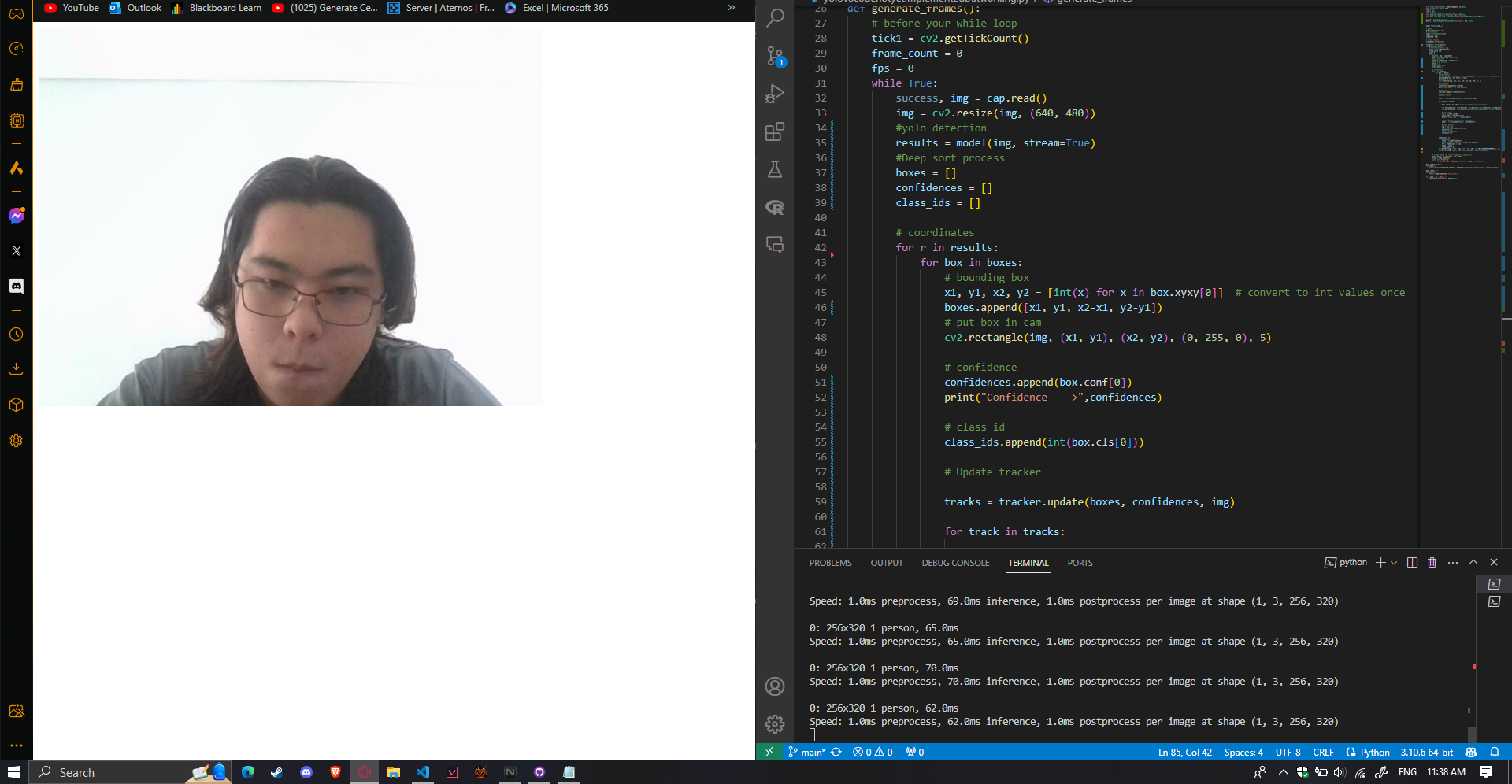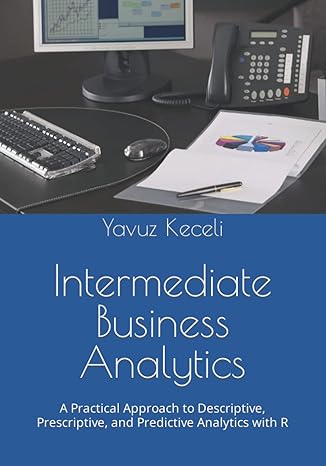Answered step by step
Verified Expert Solution
Question
1 Approved Answer
Can you please help me how to fix the bounding box based on the picture below using the flask code? Please provide the code. Thanks
Can you please help me how to fix the bounding box based on the picture below using the flask code? Please provide the code. Thanks
Here is the code.
import cv
import math
from deepsort import buildtracker # Assuming DeepSORT is installed and this is the correct import
app Flaskname
# model
model YOLObestpt
# start webcam
cap cvVideoCapture
cap.set
cap.set
# object classes
classNames person
# Initialize DeepSORT tracker
tracker buildtracker
def generateframes:
framecount
fps
tick cvgetTickCount
while True:
success, img cap.read
img cvresizeimg
# Detect objects using YOLO
results model.trackimg streamTrue, persistTrue, tracker"bytetrack.yaml"
# Process detections for DeepSORT
boxes
confidences
classids
for r in results:
for box in rboxes:
x y x yintx for x in box.xyxy
boxes.appendx y xx yy # Format: x y w h
confidences.appendboxconf
classids.appendintboxcls
# Update tracker
tracks tracker.updateboxes confidences, img
for track in tracks:
bbox track.totlbr # Get the bounding box coordinates
cvrectangleimgintbbox intbboxintbbox intbbox
cvputTextimg fclassNamesclassidstracktrackid: tracktrackid
intbbox intbbox cvFONTHERSHEYSIMPLEX,
# Remaining code for FPS calculation and frame generation
#
@app.routevideo
def video:
return Responsegenerateframes mimetype'multipartxmixedreplace; boundaryframe'
@app.route
def index:
return rendertemplatetrialhtml
if name main:
app.runhost debugTrue
# before your while loop
tick cv getTickCount
framecount theta
fps
while True:
success, img cap.read
img cvresizeimg
#yolo detection
results model img streamTrue
#Deep sort process
boxes
confidences
classids
# coordinates
for r in results:
for box in boxes:
# bounding box
for x in box.xyxy # convert to int values once
boxes.append xyxxyy
# put box in cam
cv rectangleimgx yx y
# confidence
confidences append box conftheta
printConfidence confidences
# class id
classids.appendintboxcls
# Update tracker
tracks tracker. updateboxes confidences, img
for track in tracks:
Speed: ms preprocess, ms inference, ms postprocess per image at shape
: times person, ms
Speed: ms preprocess, ms inference, Oms postprocess per image at shape
: times person, ms
Speed: ms preprocess, ms inference, Oms postprocess per image at shape
: times person, ms
Speed: ms preprocess, ms inference, Oms postprocess per image at shape # before your while loop
tick cv getTickCount
framecount
fps
while True:
success, img cap.read
img resize
#yolo detection
results model img streamTrue
#Deep sort process
boxes
confidences
classids
# coordinates
for in results:
for box in boxes:
# bounding box
for in box.xyxy # convert to int values once
boxes.append
# put box in cam
cv rectangleimgx yx y
# confidence
confidences append box conf
printConfidence confidences
# class id
classids.appendintboxcls
# Update tracker
tracks tracker. updateboxes confidences, img
for track in tracks:
Speed: ms preprocess, ms inference, ms postprocess per image at shape
: person,
Speed: preprocess, inference, Oms postprocess per image at shape
: person,
Speed: ms preprocess, inference, Oms postprocess per image at shape
: person,

Step by Step Solution
There are 3 Steps involved in it
Step: 1

Get Instant Access to Expert-Tailored Solutions
See step-by-step solutions with expert insights and AI powered tools for academic success
Step: 2

Step: 3

Ace Your Homework with AI
Get the answers you need in no time with our AI-driven, step-by-step assistance
Get Started


